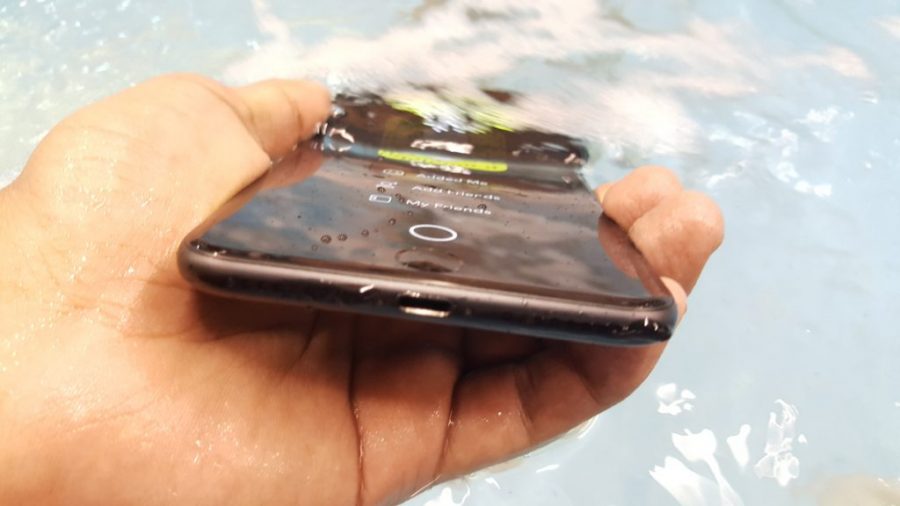Following the untimely passing of Steve Jobs in 2011, Apple Inc. desperately searched for fresh leadership to reassert market dominance. After an intense round of pick-up sticks, former Apple vice president Tim Cook was selected to fill the vacant position. Under his guidance, Apple has consistently disproved analysts, demonstrating that consumers will purchase any well-marketed item. Since the iPhone’s initial release in 2007, however, Apple hasn’t significantly affected the market — that is, until the announcement of the iPhone 7.
Despite its observably similar silhouette to past iterations, the iPhone 7 is unimaginably revolutionary. Aesthetically curved sides allow the iPhone to fit comfortably within a pocket and on a table. It comes in a variety of colors, including: silver, gold, rose gold, dark black and piano black. How does Apple accomplish piano black? Rather than using traditional polishing, a new process was developed, which is so arduous that many iPhones don’t make it out of the factory. Heart beginning to race yet? Good, because we’re just getting started.
On the backs of these glass bricks there are no longer any invasive antenna lines; rather, the antennas artfully snake around the sides of the phone. This creates a natural camouflage, and an unmistakable edge of superiority. When turning on the iPhone 7, prepare for an experience befitting a king, as the home button no longer compresses. No, that feature was too basic for Tim Cook’s world. The new home button produces a haptic force, meaning that it imitates compression while remaining unmoved. Whenever the new iPhone rings, so does the home button, an innovation technology experts are still trying to comprehend.
Let’s move on to the bottom of the iPhone 7. Notice anything different? Yes, there is no longer a 3.5mm headphone jack. Boom! Apple’s reasoning for this was that the headphone jack had been around for a decade, meaning that it needed to be taken out of the picture. This step has led some market experts to predict that next year when the iPhone turns ten years old, Apple will get rid of the device altogether. Until that point, there are now two speakers which produce even more sound.
Apple didn’t stop there, as the new iPhone 7 is water and dust resistant. At this point it would be fair to ask if the new iPhone was designed by students from Lassonde. With so many revolutionary aspects to it, it’s hard to imagine the new iPhone was created without Lassonde’s help. Speculation aside, the iPhone 7 now features the A10 Fusion processing chip. Instead of one core, it has two, which means that it operates basically twice (140 percent) as fast. Apple went further, highlighting that the current phone is nearly 120 times faster than the original generation. This means that for all of you with a first generation iPhone, you have 120 reasons to upgrade.
Naturally Apple needed to also change a few other aspects to ensure optimal performance for consumers. They accomplished this feat primarily by making the new iPhone nearly 25 percent brighter, meaning that the screen outshines all other competitors. Additionally, the iPhone 7 is nearly five grams lighter than the iPhone 6s. That difference, while seemingly marginal, is an entire teaspoon of weight removed from one’s pocket.
Beyond these changes, there is an important issue that the iPhone 7 helps consumers address: excess money. For those with simply too much financial stability, the iPhone 7 is a handy asset-burning tool. Costing nearly $100 more than past models, the next generation of the iPhone is able to whittle away at wallets effortlessly. Through Tim Cook’s leadership, the company has seen tremendous growth, and the iPhone 7 promises industry-changing innovations. While the new phone is lightyears ahead of its predecessors, the overall experience reeks of black piano. Old money mixed with a new American ambition, that’s what makes me an Apple man — time for you to become one as well.


